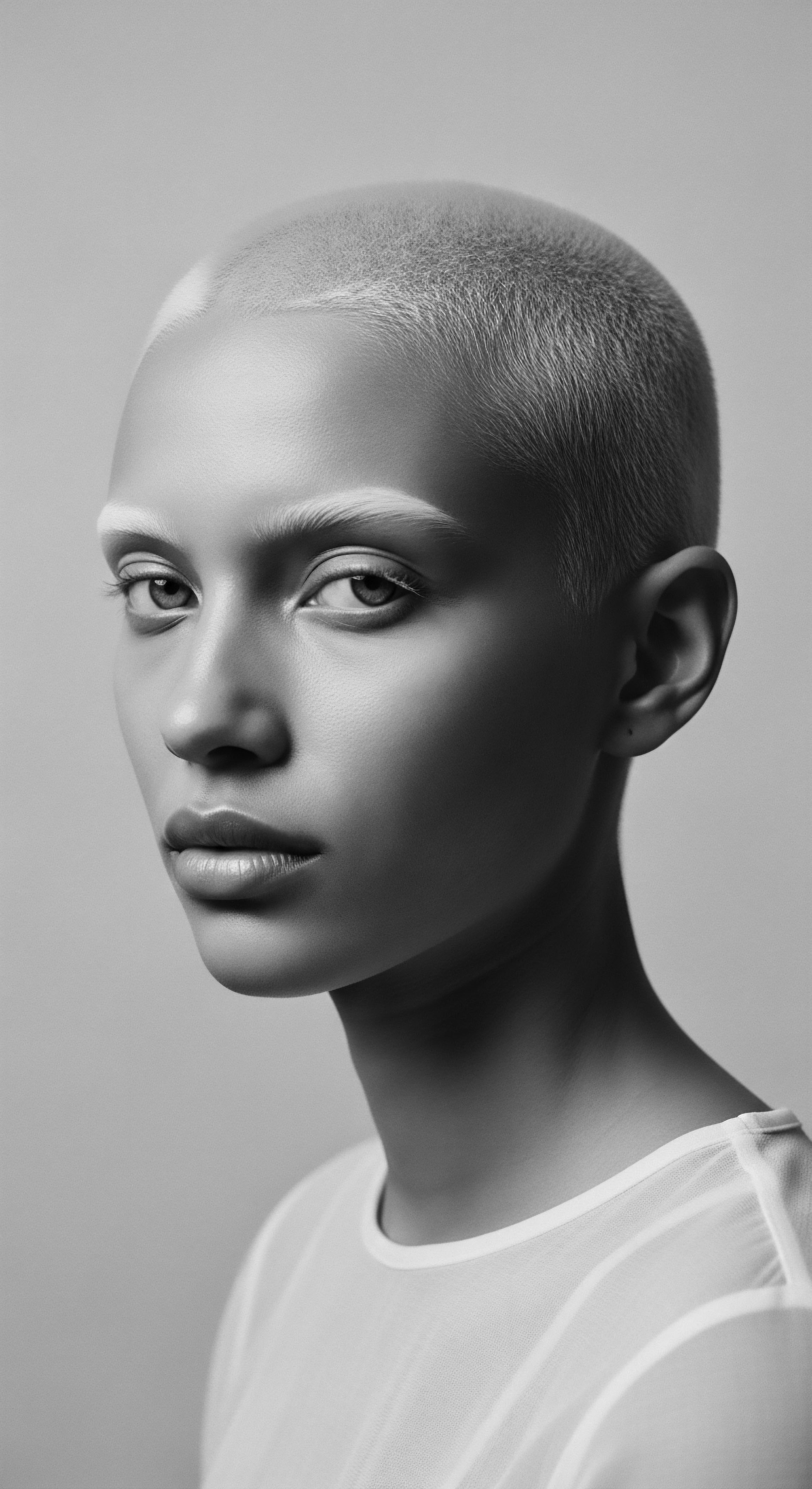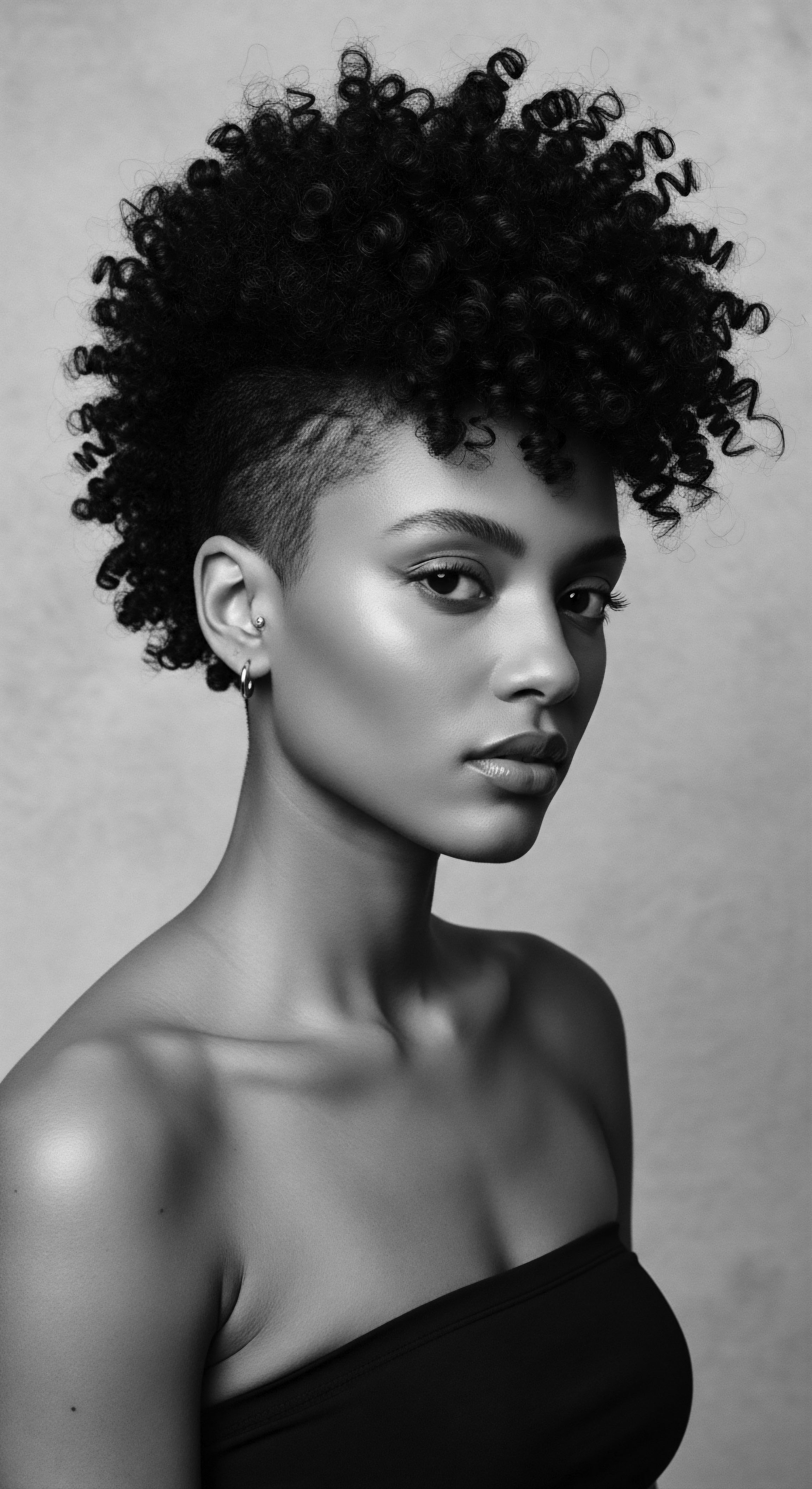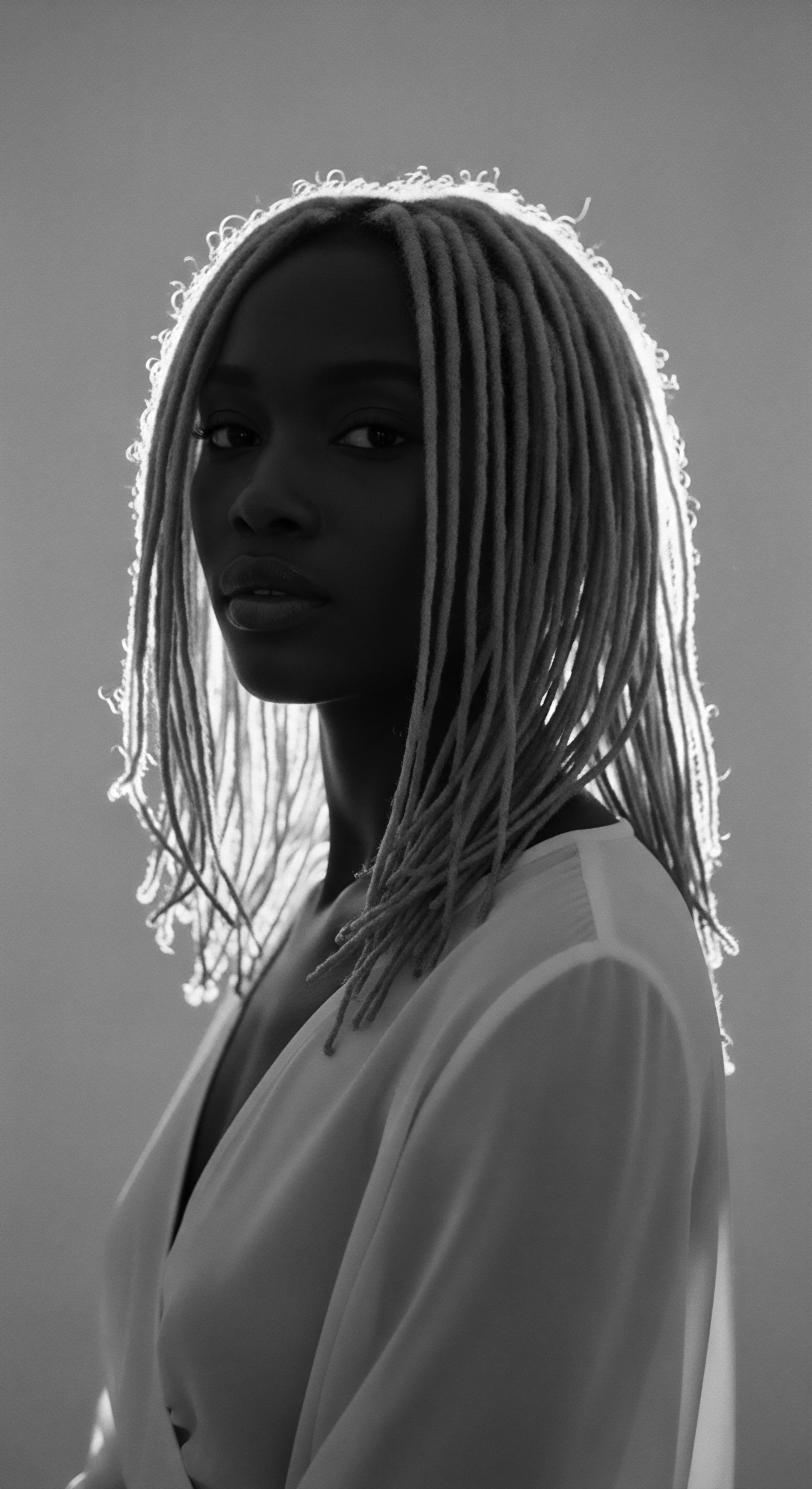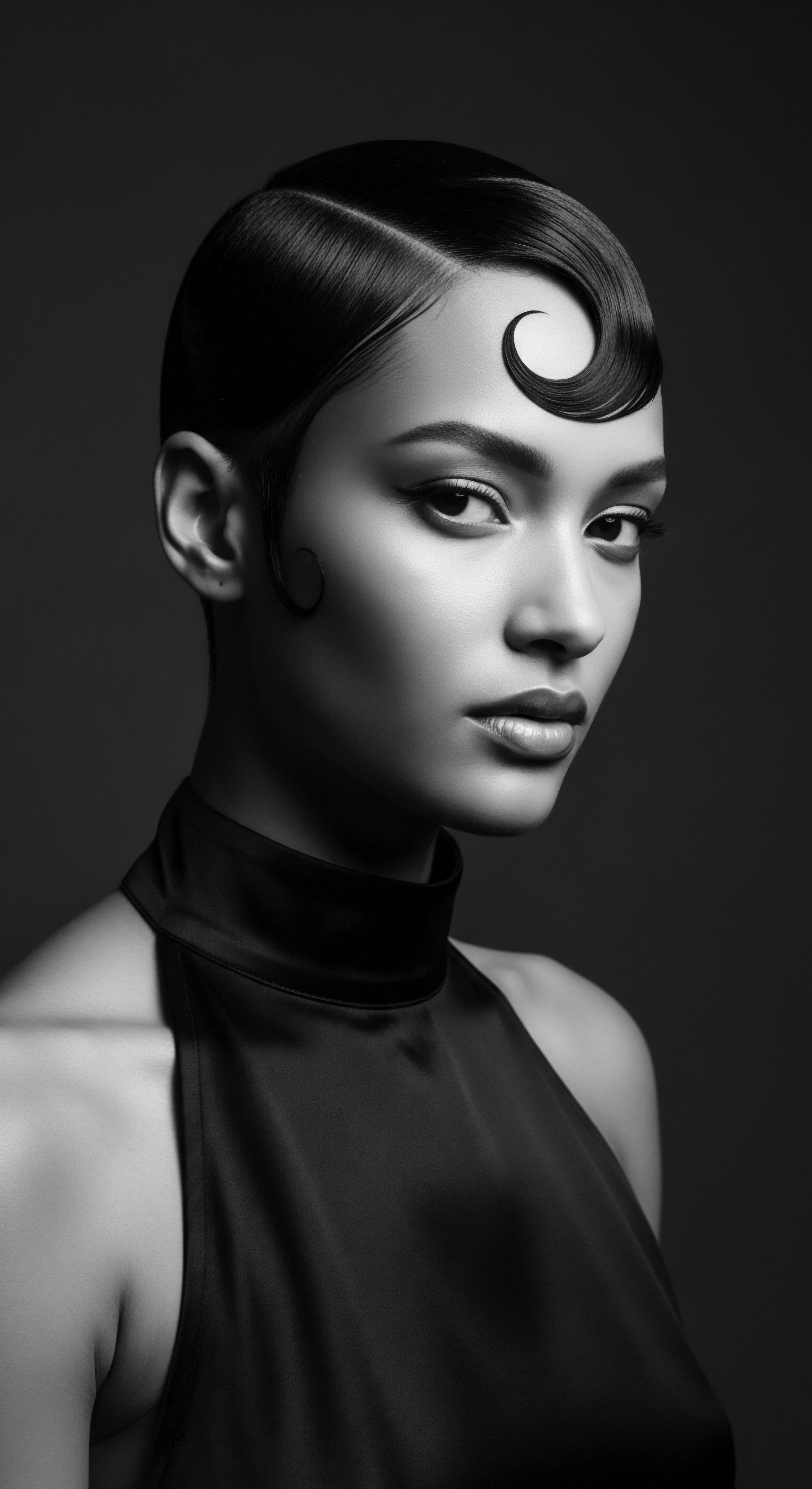
Fundamentals
The understanding of Colorism Studies begins with a foundational awareness of its genesis and enduring presence, particularly as it intertwines with the deep, storied heritage of textured hair across the globe. At its core, Colorism Studies is the academic, cultural, and societal examination of the systemic preference for lighter skin tones over darker ones, often extending to encompass favored facial features and hair textures within and across racial or ethnic groups. This preference, rooted in histories of colonialism and slavery, creates a hierarchy that bestows advantages upon those perceived as closer to Eurocentric ideals of beauty and disfavors those with darker complexions and Afrocentric features, including tightly coiled hair. It is a lens through which we scrutinize how societal valuations based on skin tone shape lived experiences, impacting everything from personal perception to communal belonging.
Historically, the very definition of ‘good hair’ became inextricably bound to this oppressive framework, aligning with straight or wavy textures, while kinky, coily hair was often relegated to the category of ‘bad hair.’ This division, born of a constructed racial hierarchy, dictated social worth and opportunity, profoundly altering hair practices and perceptions within Black and mixed-race communities. Colorism, then, is not merely a preference; it is a pervasive system of discrimination that has shaped beauty standards, economic access, and psychological wellbeing for centuries.
Colorism Studies examines how historical biases, rooted in skin tone preference, have shaped beauty standards and social opportunities, particularly for those with textured hair.

Echoes from the Source ❉ Ancestral Hair and the First Disruptions
Before the shadows of forced migration and colonial impositions lengthened across the land, African societies held hair in profound reverence. It was more than just strands; hair served as a living archive, a visible language communicating age, marital status, spiritual beliefs, ethnic identity, wealth, and societal rank. Each braid, each cowrie shell intricately woven, told a story, a testament to the individual’s journey and their community’s collective spirit. Hairdressing was an intimate communal ritual, a time for bonding, storytelling, and the transmission of ancestral wisdom across generations.
The arrival of European colonizers and the abhorrent transatlantic slave trade marked a cataclysmic rupture in this sacred relationship with hair. One of the earliest acts of dehumanization inflicted upon enslaved Africans was the forceful shaving of their heads. This brutal act stripped individuals of their visual markers of identity, their connection to lineage, and their sense of self.
The colonizers, in their drive to justify enslavement, propagated derogatory narratives, classifying Afro-textured hair as closer to animal fur or wool than human hair, thus attempting to validate their systems of exploitation. This deliberate severing from ancestral practices laid the groundwork for the colorist ideologies that would take root, dictating what was deemed ‘acceptable’ or ‘beautiful’ based on proximity to European features.
The deep reverence for hair found in ancient African civilizations, with its intricate styles signifying social and spiritual meanings, provides a stark contrast to the dehumanizing practices imposed during the era of slavery. Understanding this initial displacement helps illuminate how colorism became intertwined with hair identity, creating a complex legacy that we continue to navigate.

Early Manifestations of Hair Hierarchies
As the institution of slavery took hold, a cruel caste system emerged, dividing enslaved people based on skin tone and hair texture. Those with lighter skin and less tightly coiled hair, often the result of non-consensual relations with slaveholders, were sometimes afforded marginally ‘better’ treatment, such as domestic labor over strenuous field work. This preferential treatment solidified a hierarchy where European hair textures became the aspirational standard, seeding the notion of ‘good hair’ and ‘bad hair’ within Black communities. This internal division, spurred by external oppression, became a painful facet of inherited experiences, compelling many to alter their natural hair textures to conform.
The historical context of colorism reveals how systemic practices, from the plantation to post-emancipation laws like “The Comb Test” in the US or “The Pencil Test” during apartheid in South Africa, actively enforced Eurocentric beauty norms through hair. These tests, designed to classify and control, underscore the physical and psychological toll of a system that equated Black hair, in its natural state, with inferiority and exclusion.

Intermediate
Stepping into the intermediate layers of Colorism Studies reveals a more intricate understanding of how these historical roots continue to shape contemporary experiences of hair and identity. The concept expands beyond a mere preference, showing itself as a pervasive system affecting psychosocial wellbeing, economic opportunities, and self-perception within Black and mixed-race communities. The continuing legacy of colonial beauty standards, which valorized lighter skin and straighter hair, created enduring societal pressures to conform. This pressure often translated into physical and emotional burdens, driving individuals to chemically or thermally alter their hair in pursuit of ‘acceptability.’
The meaning of Colorism Studies deepens as we observe its insidious presence within family systems, peer groups, and mainstream media, perpetuating divisions and influencing perceptions of beauty and worth. It compels us to consider how internalized messages about skin tone and hair texture impact the sense of self, leading to struggles with identity and self-esteem.

The Tender Thread ❉ Living Traditions and Their Trials
The journey of textured hair through the ages has been one of resilience and adaptation, a tender thread connecting generations despite the deliberate attempts to sever it. From the vibrant hair markets of ancient West Africa to the subtle acts of hair care in the shadow of bondage, ancestral practices held fast, offering solace and resistance. Even when tools and traditional ingredients were scarce, ingenuity prevailed, giving birth to new forms of care and styling.
For instance, in traditional African societies, specific hair adornments conveyed status or prepared individuals for spiritual rites. Consider the Yoruba Culture, where elaborate hairstyles were not only aesthetically pleasing but also communicated lineage, wealth, and spiritual connection. The braiding and adornment practices, often involving intricate patterns and natural oils like shea butter, were communal rites, strengthening familial bonds and preserving cultural knowledge. The imposition of colorist ideals directly challenged this inherited understanding, demanding an erasure of these meaningful expressions.
The notion of ‘good hair,’ deeply interwoven with colorism, created painful internal conflicts. A study examining African American female adolescents found that discussions around hair frequently brought forth traumatic experiences linked to colorism, shaping their perceptions of self and wellbeing. Participants in this study often conceptualized ‘good hair’ as hair that aligned with White beauty standards, perpetuating societal biases they absorbed from family, peers, and media. This demonstrates the enduring impact of colorism, even within intimate spaces.
Despite oppressive pressures, traditional textured hair care practices remain acts of self-love and cultural reclamation, embodying a deep connection to ancestral wisdom.

Navigating Modern Currents ❉ The Natural Hair Movement
In recent decades, a powerful resurgence has taken hold ❉ the natural hair movement. This movement represents a profound act of decolonization, encouraging individuals to wear their natural curl patterns without chemical or heat alteration. It began as a political statement during the Civil Rights and Black Power movements, with styles like the Afro symbolizing pride and defiance against Eurocentric beauty norms. Today, it has evolved into a global phenomenon, facilitated by social media, where individuals share knowledge, product recommendations, and personal journeys of self-acceptance.
| Traditional African Hair Practices Symbol of identity, age, wealth, spirituality |
| Colorist-Influenced Standards (Post-Slavery) "Good hair" (straight/loose curls) as a marker of social value |
| Traditional African Hair Practices Intricate braiding, twisting, coiling |
| Colorist-Influenced Standards (Post-Slavery) Pressure to straighten hair using heat or chemicals |
| Traditional African Hair Practices Use of natural oils, butters, herbs |
| Colorist-Influenced Standards (Post-Slavery) Reliance on commercial relaxers and straightening products |
| Traditional African Hair Practices Communal grooming as social activity |
| Colorist-Influenced Standards (Post-Slavery) Individualized pursuit of Eurocentric aesthetic |
| Traditional African Hair Practices This table reflects the stark shift in hair perception and practice, illustrating the disruption of ancestral ways by colorist ideologies. |
Yet, even within this liberating movement, the specter of colorism can linger. Studies point to an internal hierarchy where lighter-skinned individuals or those with looser curl patterns often gain more visibility and praise within the natural hair community. This phenomenon, sometimes termed ‘texturism,’ mirrors colorist biases by privileging certain hair types over others, creating a new set of pressures and exclusions. It underscores the deep embedding of these discriminatory practices, necessitating ongoing introspection and intentional inclusivity within the movement itself.
- Cultural Significance ❉ Ancient African hairstyles conveyed messages about status, age, and spiritual connection.
- Colonial Disruption ❉ Enslavement practices stripped Africans of their hair-based identity, fostering a hierarchy valuing European hair.
- Post-Slavery Adaptations ❉ Hot combs and chemical relaxers became tools to conform to prevailing beauty standards.

Academic
An academic understanding of Colorism Studies delves into its complex, interwoven origins and multifaceted manifestations as a system of social stratification. It is an area of rigorous inquiry that examines the systematic privileging of individuals based on lighter skin tones, and often, concomitant features like straighter hair, over those with darker complexions and more tightly coiled hair. This phenomenon is not simply about aesthetic preference; it represents a deeply ingrained societal mechanism of advantage and disadvantage that operates intra-racially and inter-racially, shaping life outcomes across education, employment, housing, and social status. The discipline of Colorism Studies meticulously uncovers how these biases are not random occurrences but products of specific historical, political, and socio-economic forces, primarily stemming from the legacy of slavery and colonialism.
The meaning of Colorism Studies, in an academic sense, involves scrutinizing its ideological underpinnings, tracing its evolution through various diasporic communities, and analyzing its psychological, economic, and cultural consequences. It mandates a critical examination of how colorist frameworks have been institutionalized through beauty industries, media representation, and even within familial structures, perpetuating cycles of internalized oppression and division. This scholarly pursuit aims to deconstruct these pervasive systems, offering pathways for recognition, resistance, and healing.

The Unbound Helix ❉ Identity, Resilience, and Shaping Futures
The coiled strands of Black and mixed-race hair carry within them an unbound helix of history, resilience, and identity. Colorism Studies, from an academic vantage point, illuminates how the hair experiences of individuals are not isolated incidents but reflections of broader societal structures. The persistent pressure to conform to Eurocentric hair standards has led to significant psychosocial impacts, including diminished self-esteem and identity confusion. However, this struggle has also galvanized movements of self-affirmation, transforming hair into a powerful symbol of cultural pride and resistance.
Consider the profound impact of colorism on Black Women’s Professional Lives, particularly concerning hair. The CROWN Coalition’s 2023 Study revealed that Black women’s hair is 2.5 times more likely to be deemed unprofessional than other women’s hair, a reality that demonstrably impedes advancement opportunities. This statistic is not an isolated data point; it is a manifestation of centuries-old colorist and texturist ideologies that label natural Black hair as unkempt or unsuitable for formal environments. Such findings underscore the material consequences of colorism beyond mere aesthetics, affecting economic mobility and social integration.
Academic inquiry into Colorism Studies reveals how historical power dynamics continue to manifest in beauty standards, impacting life opportunities and fostering both struggle and profound acts of cultural affirmation.
The phenomenon of colorism is further complicated by its intersection with other social categories, such as gender. Women, particularly Black women, often experience a heightened intensity of colorist discrimination, as beauty standards disproportionately scrutinize their physical appearance. This dynamic can create internal rifts, where individuals with darker skin and more tightly coiled hair face rejection or marginalization, while those with lighter features may encounter questions regarding their ‘ethnic authenticity’ within their own communities. Such internal tensions are a direct legacy of color-based stratification, demonstrating the pervasive psychological effects of colorism.

Psychological and Societal Ramifications
The psycho-social impact of colorism on individuals, particularly Black women, is a central area of academic exploration. Research indicates that messages transmitted through family systems and media can instill biases from early childhood, leading to negative self-perceptions linked to skin tone and hair texture. Abrams et al.
(2020) found that many African American adolescent girls are acutely aware of colorism, with a majority expressing a belief that lighter skin is more beautiful, despite attempts to reject these Eurocentric ideals. This highlights the persistent internalization of colorist beauty norms, even among younger generations.
The economic consequences of colorism also receive considerable academic attention. Studies show a consistent pattern where lighter-skinned Black individuals tend to attain higher educational levels, secure better-paying jobs, and even experience more favorable marital outcomes compared to their darker-skinned counterparts, even when controlling for other socio-economic factors. This differential access to capital underscores how colorism, as a subsystem of racism, continues to stratify society and perpetuate wealth disparities.
- Internalized Biases ❉ Early exposure to colorist beauty ideals can lead to self-perception struggles and internalized notions of ‘good’ versus ‘bad’ hair.
- Social Stratification ❉ Colorism creates hierarchies within racial groups, affecting access to opportunities in education, employment, and social spheres.
- Resistance Movements ❉ Natural hair movements serve as powerful counter-narratives, promoting self-acceptance and cultural affirmation against colorist pressures.
| Era/Context Transatlantic Slavery (16th-19th c.) |
| Dominant Hair-Related Colorist Practice Forced head shaving; 'house slave' preference for lighter skin/straighter hair. |
| Consequence/Resistance Loss of identity markers; internal division; early attempts at hair alteration with rudimentary means. |
| Era/Context Post-Emancipation/Jim Crow (late 19th-mid 20th c.) |
| Dominant Hair-Related Colorist Practice "Comb Test," "Pencil Test"; rise of relaxer industry (e.g. Madam C.J. Walker's early products). |
| Consequence/Resistance Economic opportunity for Black entrepreneurs in hair care; physical damage from chemical straightening; continued social pressure to conform. |
| Era/Context Civil Rights/Black Power (1960s-1970s) |
| Dominant Hair-Related Colorist Practice Afro as a symbol of Black pride and defiance; shift towards natural textures. |
| Consequence/Resistance Reclamation of Afrocentric beauty; political statement through hair; backlash against 'assimilationist' styles. |
| Era/Context Modern Natural Hair Movement (2000s-present) |
| Dominant Hair-Related Colorist Practice Social media-driven celebration of textured hair; ongoing texturism within movement. |
| Consequence/Resistance Increased visibility for diverse hair types; persistent internal hierarchies based on curl pattern; legal protections (CROWN Act). |
| Era/Context The trajectory of hair-related colorism demonstrates a continuous interplay of oppressive forces and resilient acts of self-definition across the diaspora. |
The ongoing academic discourse also extends to legal and policy frameworks, such as the CROWN Act in the United States, which aims to prohibit discrimination based on hair texture and protective hairstyles. These legislative efforts are direct responses to the documented biases faced by Black individuals in educational and professional settings. While legislative strides represent progress, the deep-seated nature of colorism necessitates continued scholarly inquiry into its nuanced impacts and the ongoing work of decolonizing beauty standards. The goal for scholars and advocates alike is to dismantle these ingrained prejudices, promoting a world where every strand is acknowledged as a testament to unique heritage and beauty, unburdened by historical impositions.

Reflection on the Heritage of Colorism Studies
To consider the heritage of Colorism Studies is to embark upon a sacred contemplation of the threads that connect us to our forebears, those who navigated worlds shaped by the insidious hand of shade-based prejudice. It calls upon us to recognize that our textured hair, in its glorious diversity, carries not only genetic blueprints but also the echoes of resilience, adaptation, and defiance against centuries of imposed aesthetic hierarchies. The journey of Colorism Studies is, in essence, the intellectual and soulful pursuit of understanding how the societal valuation of skin tone and hair texture has cascaded through generations, shaping perceptions of beauty, belonging, and worth.
Every coil, every curl, every loc is a living testament to ancestral strength, a testament that has, at times, been obscured or even weaponized by colorist ideologies. Yet, the deep knowing within our communities, passed down through whispers and rituals of care, continues to remind us that our hair is a crown, deserving of reverence regardless of its closeness to an arbitrary European standard. This enduring wisdom, often found in the quiet moments of wash day or the communal joy of braiding, offers a profound counter-narrative to the historical wounds of colorism.
Our hair, with its inherent textural variation, holds within its very structure the ancestral wisdom that defies the narrow dictates of colorism.
The ongoing work within Colorism Studies, therefore, is not merely academic; it is a vital act of restorative justice. It compels us to unearth the hidden histories, to validate the experiences that have long been silenced, and to celebrate the myriad forms of Black and mixed-race beauty that have, against all odds, continued to flourish. The scientific understanding of hair, when viewed through this heritage-centric lens, affirms what ancestral practices have always known ❉ that the unique biology of textured hair is a marvel of nature, capable of immense versatility and protection.
It becomes a bridge, linking ancient knowledge with modern affirmation, allowing us to weave a future where every strand stands tall, imbued with the deep, resonant pride of its lineage. This work ensures that the legacy of our hair, from the elemental source of its growth to its role in voicing identity, truly remains an unbound helix of strength and self-acceptance.

References
- Abrams, L. S. Belgrave, F. Z. Williams, A. & Maxwell, B. (2020). The Influence of Colorism on the Hair Experiences of African American Female Adolescents. Journal of Black Psychology, 47(1), 3-26.
- Byrd, A. & Tharps, L. L. (2001). Hair Story ❉ Untangling the Roots of Black Hair in America. St. Martin’s Press.
- Hunter, M. (2005). Race, Gender, and the Politics of Skin Tone. Routledge.
- Monk, E. P. (2021). The Cost of Color ❉ Skin Color, Discrimination, and Health Among African Americans. Russell Sage Foundation.
- Norwood, G. (2014). Colorism ❉ The Politics of Skin Color. Routledge.
- Rooks, N. M. (1996). Hair Raising ❉ Beauty, Culture, and African American Women. Rutgers University Press.
- Russell, K. Wilson, M. & Hall, R. (1992). The Color Complex ❉ The Politics of Skin Color in Black and White America. Anchor.
- Tharps, L. L. (2016). Same Family, Different Colors ❉ Confronting Colorism in America’s Diverse Families. Beacon Press.
- Thompson, M. S. (2009). Soul Food ❉ The Surprising Story of an American Cuisine, One Plate at a Time. W. W. Norton & Company.
- Walker, A. (1983). In Search of Our Mothers’ Gardens ❉ Womanist Prose. Harcourt Brace Jovanovich.
